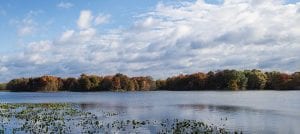There are important rules of etiquette and safety for hikers and campers. Here are my top 14 of them.

Backpacking on trails at the base of the Grand Canyon, in Argentina’s Patagonia Lake District, through the Dolomites of Italy, along the Inca Trail to Machu Picchu or on the famous Appalachian Trail that runs continuously from Springer Mountain in Georgia to Mount Katahdin in Maine take hikers/travelers past breathtaking mountains and valleys, incredible lakes and rivers, through areas of important world history and culture while offering travelers a deep immersion in the world of nature and local culture. It provides physical and mental challenges that aren’t available in most other kinds of travel.
Hiking and camping allow individuals to both disconnect and connect to the world simultaneously.
Most interestingly, it allows individuals to both disconnect and connect to the world simultaneously. It allows people to step away from everyday life while joining the natural world.
The natural world is far more fragile than we find in urban and suburban areas and even rural areas throughout the world. Therefore, going into the natural world there is real responsibility that the hikers and campers must take to ensure their presence doesn’t disturb the natural balance they are hiking through.
Stay on the trail, read it well, don’t block it during breaks and follow the yield rules for others on the trail.
14. Always stay on the trail:
Erosion is far more easily started than stopped. Going off trail can destroy fragile ecosystems and create or enlarge mud pits, etc.
13. Read the trail:
As you hike along, be mindful of trail conditions and alter your hike accordingly. If it’s too wet or muddy, for example, it might be best to take the trail another day to be safe and preserve the trail.
12. Take breaks near the trail, not blocking it:
This sounds like I’m advocating against the other rules, but I’m not. Find a solid, flat area adjacent to the trail with little or no undergrowth, preferably a short grassy or sandy area that can handle your stop for a break or snack. If it’s a sandy area, restore it to the extent possible to the way you found it.
11. Yield on the trail:
On a crowded trail yield to faster hikers, hikers coming in the opposite direction and hikers going uphill: Always walk to right on the trail to allow hikers coming from the opposite direction or from behind to pass you. It’s harder to hike uphill, so let uphill hikers pass you too. You don’t want to add to their huffing and puffing misery.
Don’t disturb wildlife while you’re on your hiking/camping journey, be aware of your surroundings and wear comfortable, quality clothing.
10. Don’t disturb the wildlife:
Wildlife need their space away from you and you need it a distance from them. For heaven’s sake, no selfies with the animals. It seems like I read that a hiker is attacked every week by an animal which they were lining up with to get a selfie. While most hikers survive the attacks, more than a few die. Moreover, don’t disturb the wildlife for their sake.
9. Keep it friendly:
When on the trail, be friendly. Say “Hi” when you encounter others or at least give a head nod. Who knows, that friendly gesture might be followed by great advice, notice of interesting sights ahead that you otherwise might miss or potential trouble to avoid.
8. Always be aware of your surroundings:
Just like in big cities while traveling, be aware of your surroundings. Watch out for animals that could harm you and terrain that has difficulties. Watch out for covered holes that could trip you and cause a broken ankle or arm or worse. Watch out for poisonous plants that could make your life miserable.
7. Wear quality and comfortable clothing:
Wear comfortable, but sturdy hiking shoes/boots. I prefer boots for ankle support and they’re better at keeping foreign objects from getting in them. Wear long pants and a long sleeve shirt to prevent scratches from flora, bites from insects and too much sun. Wear a hat to protect your head from sun and break up your profile, to prevent enlarging nearby animals’ circles of fear. If the forecast for the day is sunny, in case you’re stuck and have to stay out, have rain gear with you. Dress in layers. It can be cold at night, even in summer, so be prepared.
Bring an essentials kit as well as a phone that can communicate via satellite, and don’t forget to give family and friends your itinerary for check-ins and in case of an emergency.
6. Bring an essentials kit:
Every hiker, even if they’re planning just a day hike, needs an essentials kit that includes a change of clothes, extra water and food, matches in a waterproof case, a knife, a first aid kit, sun protection, a headlamp (better than a flashlight), a power pack to recharge everything you bring on the hike, a smartphone with downloaded maps for when you have your GPS coverage but no Internet to draw the maps.
5. Carry satellite communications:
In much of the wild, even in the U.S., there’s no cell service available. While you likely will have GPS satellite data available to help you find your way, standard cellphones or smartphones won’t be able to call, email or text. I carry an iPhone 16 Pro which can communicate by text message via satellite service to get help and keep in touch with family and friends as needed. If your cellphone doesn’t have satellite capability, get a sat-phone for your hiking/camping.
4. Give your itinerary to family and friends:
I recommend this to travelers for every journey, no matter what their destination(s). Family and friends should know your milestones, when you expect to be at specific locations where they can contact you or you them in an emergency and to be sure you’re well. You need to contact them at these waypoints or know that they will send help if you’re overdue. Be sure to have identification with you to help rescue teams be certain of who you are in case of trouble and if you’re found unconscious but alive. Carry health information that will be readily available for rescue teams.
If you bring it in, bring out everything that wasn’t consumed; don’t feed the wildlife and leave everything better than you found it.
3. Pack it in, pack it out:
It doesn’t matter what it is — bags, cans, paper, even your garbage from what you brought with you, should be carried out and then properly disposed of, recycled or composted. This includes your toilet paper.
2. Don’t feed the wildlife:
Animals in the wild are perfectly capable of finding their own food. They have specific diets that work well for them. The food humans eat is for humans, not wild animals. Whatever food you bring, eat it yourself and return with all waste from cooking/eating it.
1. Leave everything better than you found it:
That includes the trail and everywhere you stop or camp. If possible, you shouldn’t leave a single trace that you were there other than sketches or photographs you bring back from your journey.
Following these important rules will help you stay safe and better enjoy your journey in the natural world.
(Image: It’s fall at the John Heinz National Wildlife Refuge at Tinicum, Copyright © 2019 NSL Photography. All Rights Reserved.)
After many years working in corporate America as a chemical engineer, executive and eventually CFO of a multinational manufacturer, Ned founded a tech consulting company and later restarted NSL Photography, his photography business. Before entering the corporate world, Ned worked as a Public Health Engineer for the Philadelphia Department of Public Health. As a well known corporate, travel and wildlife photographer, Ned travels the world writing about travel and photography, as well as running photography workshops, seminars and photowalks. Visit Ned’s Photography Blog and Galleries.



